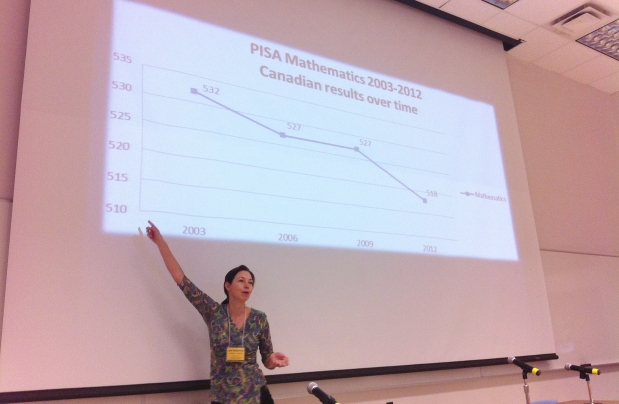
Declining PISA scores across Canada should be a concern to everyone, not just educators, says a new report from think tank The C. D. Howe Institute.
The study found that Canadian students’ average score has been steadily slipping, but its author draws particular attention to the downward trend in math and science. Quebec was the only province whose math scores did not change in the last round of testing.
The report points out that relative competence on the PISA test is a better marker of prosperity than classroom time. Although Canada’s rank is still quite high, that is not license to become complacent.
The sharp decline in math proficiency in Alberta in particular is troubling. The province is currently embroiled in controversy regarding its math curriculum.
The report comes at a time when PISA aces Shanghai and South Korea are debating whether to pull out of the test.
But it’s not all bad news: the report also draws attention to Canada’s success in mitigating the effects of poverty, at least in terms of education. Among PISA nations, Canada’s low-income student scores are among the closest to the scores of their more affluent peers.
Read more:
- Falling PISA Grades Should Worry Provincial Educators: C.D. Howe Institute
- University of Alberta math education expert says discovery math is not to blame for falling test scores
- Pisa prodigy Shanghai may pull out of testsm
- ‘Obama wrong about Korean education’
About the Author: Jaclyn Neel is a visiting Assistant Professor in Ancient History at York University in Toronto, Ontario.